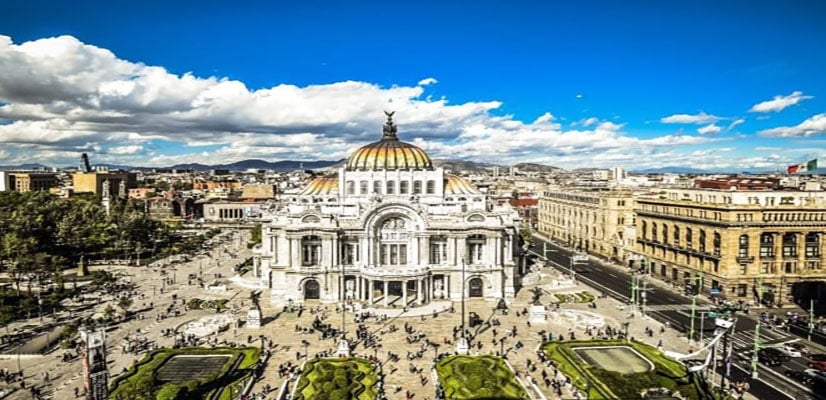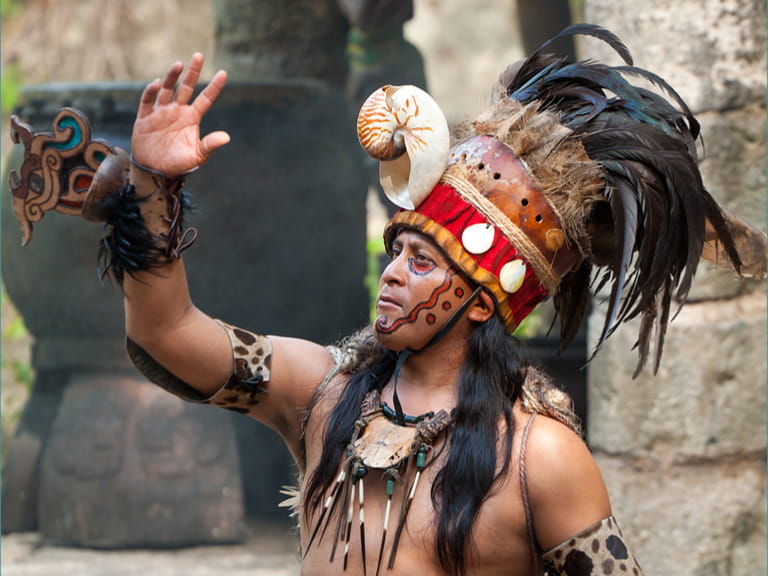Estimated reading time: 9 minutes
Mexico is much more than lines on a map. It’s a land bursting with history, stunning landscapes, and unique traditions.
Understanding its culture might seem like a puzzle with many pieces, but that’s what makes it so fascinating!
Think about all the things that make a country special. Mexico has a rich mix of languages, delicious food, amazing geography, a long history, colourful celebrations, and strong beliefs. These are just some of the pieces that come together to create Mexico’s unique identity.
In this article, we’ll explore each piece, one by one. We’ll dive into the food and art that moves people’s hearts, the stories of the past, and the values that connect communities. By understanding these pieces, we’ll gain a deeper appreciation for the magic of Mexico.
1. Food
Mexican Ingredients
Mexico’s cuisine boasts a vibrant tapestry of flavors, built on a foundation of ingredients native to the region. Corn (maize) takes centre stage, serving as the heart of countless dishes. Beans, squash, and chillies add depth and complexity, while avocados, tomatoes, and tomatillos bring freshness and acidity.
Did you know? Burritos, those portable pockets of deliciousness, are believed to have originated as a convenient way for travelling labourers to carry their beans wrapped in tortillas!
This list also highlights some fascinating lesser-known ingredients like chia, cacao, vanilla, agave, and even cactus, all contributing to the unique flavours of Mexican food. From protein-rich turkey to the superfood spirulina, and the sweetness of sweet potato, Mexican cuisine offers a diverse and delicious exploration for every palate.
Chocolate originated in Mexico – a prized commodity for the Aztecs, who believed that it was a gift from the gods. Likewise, chillies are native to Mexico and their use dates back thousands of years.
Chillies can add flavours and not strictly just heat. Mexican food has a reputation for being very spicy but has a wide range of flavours. A broad range of spices feature in Mexican food and not all are spicy. Many dishes also have subtle flavours.
After the Spanish conquest of the Aztec Empire, the Europeans introduced meats from domesticated animals (Beef, chicken, pork and lamb). Also dairy products (cheese and milk), along with rice.
Regional Differences
Many people have tried Mexican restaurants in their city, but these aren’t real ones. To taste real Mexican food you need to visit Mexico. However, there’s a complication here in Mexican culture. Although Mexican dishes are typical of the country, just like much-loved Tacos and Guacamole, people from Mexico City will tell you that their tacos are the original ones.
Likewise in the Yucatán, they will say the same, and so on. As a result Mexican cuisine as delicious as it is, is very regional. Every state has its typical dishes and variations of the same dish.
These offer very unique tastes and flavour combinations. The food is part of Mexican identity but also shows the uniqueness of each state.
2. History
Mexican history is very interesting and complex, but also sad. The Aztec tribe came into power in 1325 and founded a city called Tenochtitlan, now occupied by modern Mexico City. The Spanish conquered the original city in 1521 and Mexico became a Spanish colony. Mexico then gained its independence back from Spain in 1821.
The pre-Hispanic civilisation left impressive monuments and archaeological artefacts. Historians and anthropologists brought them back to life and managed to put together the pieces of the puzzle, or some of them. They discovered interesting anecdotes and information about this wise and advanced civilisation.
Both who they were before the Spanish conquest, as well as what they have become since. This set the foundation for the present society, its people, and Mexican culture in general.




3. Festivities and Traditions

We couldn’t talk about Mexican culture without mentioning festivities and traditions, which Mexicans are very attached to. It’s uncertain as to whether it’s a deeply heartfelt thing, or simply because it’s an excuse to celebrate. Nevertheless, they do know how to celebrate and how to keep their traditions alive.
One of the most important is The Day of the Dead which is celebrated over two days, November 1st and 2nd. This is the same as All Saints Day and All Souls Day in Christianity. On these days, families gather in the cemeteries to celebrate their loved ones who have passed away. It’s a very unique and colourful festival, with an abundance of flowers, candles, food, prayers and songs. It’s an amalgamation between pagans and religious beliefs.
4. Language
Indigenous Communities
Before the arrival of the Spaniards, the territory that is now called Mexico was divided into many different regions. These were occupied by very distinct ethnic groups, each one with its own Mexican culture and language. Some of the lingo from those groups is now still alive and spoken by the indigenous populations, either as a first or a second language.
The main and official one is Spanish, but the Mexican government has officially recognised 68 other languages. These all have their dialects. The most commonly known is the Mayan language, which is spoken by the indigenous communities of the Yucatán Peninsula, Chiapas and Guatemala.

Mexico has celebrations everywhere but the best places to enjoy them the most are in the cities of Pátzcuaro in Michoacán and Oaxaca City.

Maya
If you have travelled to Cancun or the Riviera Maya it’s most likely that the taxi driver that took you to your hotel or the waiter that attended to you at the restaurant knows how to speak “Maya”. This is the Mayan language of Yucatán. It has been recognised as an official language and is taught in schools out of respect for Mexican history.
Nahuatl
Another language widely used and still alive is the Nahuatl. This was spoken by the Aztecs and many other ancient civilisations who settled in central parts of Mexico. Keeping alive the old languages after conquerors had imposed their own is a way for Mexicans to honour the identity and origins of the population.
5. Religion
The Arrival of Catholicism in Mexico
When the Spanish conquistadors came to Mexico, they relied on religious groups like the Jesuits and Franciscans to connect with the local people and build trust.
These groups offered free education, which included teachings about Catholicism, while also advocating for the rights of the indigenous people.
This approach helped plant the seeds of Catholicism in Mexico, and the religion grew strong over time.
While ancient traditions remain important to many Mexicans, the influence of the Catholic education system established early on is why many people grow up with a deep connection to Catholicism.

6. Art

Mexico gave birth to some of the greatest artists in the world. These include controversial painter Frida Kahlo and her lover the muralist Diego Rivera. In addition, his lifetime rivals Alvaro Siqueiros and Jose Clemente Orozco, both with their magnificent political murals.
Octavio Paz offers a beautiful portrait of Mexican society within his book “The Labyrinth of Solitude”, which he won a Nobel Prize in Literature for.
They are a few of the most commonly known in the world among the extraordinary artists that have made history representing Mexico throughout the years.
We hope you’ve enjoyed reading a bit about Mexican culture! For other similar blogs please visit:




 Huevos Rancheros
Huevos Rancheros

So informative and interesting, loved it! And so did my Mexican girlfriend (only Mexican in Dumfries and Galloway)
Thank you! Glad you enjoyed it. Of course there is so much to be said, but it’s a good snapshot. I will be doing another one soon on Mexican Festivals and Events, so keep a look out!